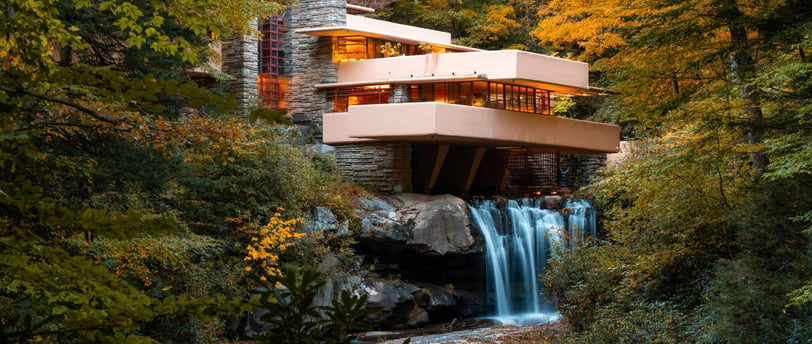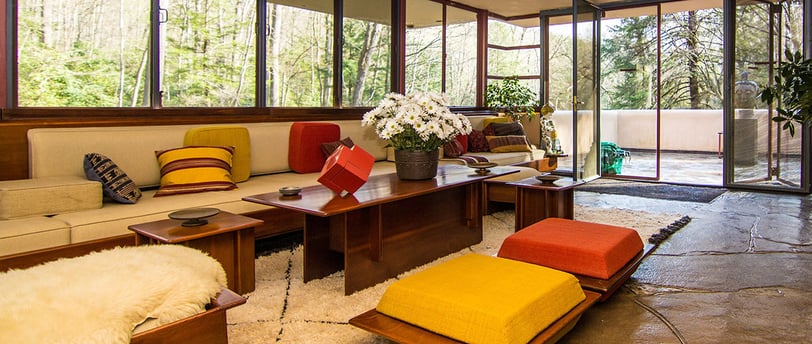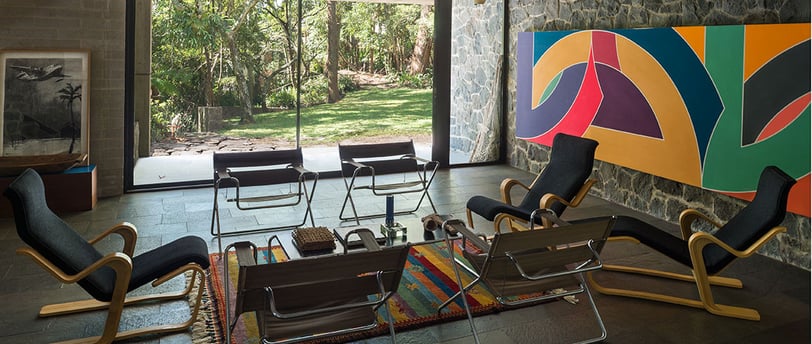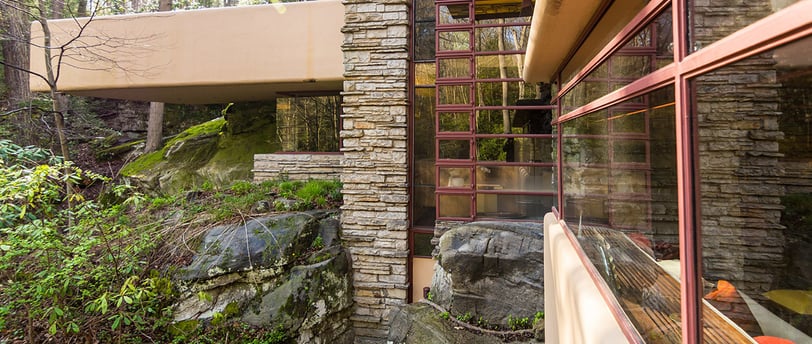Fallingwater by Frank Lloyd Wright: How Organic Architecture Redefined Modern Design (1935)
The Iconic Fusion of Nature and Modern Architecture in Rural PennsylvaniaBlog post description.
TSI BLOG
TSI Architects & Engineers
4/18/20254 min read


Modern architecture, born in the early 20th century, rebelled against ornate historical styles, embracing minimalism, functionality, and technological innovation. Pioneers like Le Corbusier and Mies van der Rohe championed open spaces, industrial materials, and geometric simplicity, reflecting a machine-age ethos. Yet Frank Lloyd Wright’s Fallingwater, completed in 1939 in rural Pennsylvania, transcends these principles by harmonizing modernity with nature. Perched dramatically over a cascading waterfall, this weekend home for the Kaufmann family is not just a building—it is a poetic dialogue between human ingenuity and the wild. Celebrated as Wright’s magnum opus, Fallingwater redefined what architecture could aspire to be: a living extension of the earth itself.
Architectural Vision: Wright’s Organic Philosophy
Frank Lloyd Wright, a visionary often at odds with his peers, championed “organic architecture”—the belief that structures should emerge from and enhance their environments. “No house should ever be on a hill,” he wrote. “It should be of the hill.” Fallingwater embodies this philosophy. Commissioned by Pittsburgh department store magnate Edgar Kaufmann Sr., the project was initially expected to offer sweeping views of Bear Run Creek’s waterfall. Instead, Wright stunned the Kaufmanns by placing the house directly over it, declaring, “I want you to live with the waterfall, not just look at it.”
Inspired by Japanese architecture’s horizontal lines and the Arts and Crafts Movement’s reverence for natural materials, Wright sought to dissolve boundaries between indoors and outdoors. His design rejected the era’s industrial austerity, favoring warm, earthy textures and dynamic spatial flow. Fallingwater became a manifesto for organic modernism, proving that innovation need not sacrifice intimacy with nature.


Design Features: A Ballet of Cantilevers and Craftsmanship
Fallingwater’s genius lies in its audacious structural drama and meticulous attention to detail. The house is a cascade of reinforced concrete terraces, cantilevered like diving boards over the waterfall. These horizontal planes, painted in warm ochre to mimic autumn leaves, contrast with vertical stone walls quarried onsite, anchoring the house to its rocky site. Wright arranged the rooms around a central hearth of native sandstone, symbolizing the home’s heart and echoing prehistoric fire-centered dwellings.
The interior unfolds as a labyrinth of compressed and expansive spaces. Low ceilings in entryways compress visitors before releasing them into airy living areas with floor-to-ceiling windows. A suspended staircase descends from the living room to the rushing water below, amplifying the sensory connection to the falls. Custom-designed furnishings, including built-in desks and cantilevered seating, blur the line between architecture and furniture.
Despite its elegance, Fallingwater faced engineering challenges. The cantilevers, revolutionary for their time, began sagging within decades due to insufficient steel reinforcement—a testament to Wright’s prioritization of aesthetics over practicality. Later restorations added hidden supports, preserving the illusion of weightlessness.


Historical Context: A Beacon in the Depression Era
Fallingwater emerged during the Great Depression, a period of economic despair that paradoxically fueled architectural experimentation. As governments invested in public works, Wright—then seen as a fading star—seized the Kaufmann commission to reignite his career. The project showcased new materials like steel and concrete, which were becoming symbols of progress, yet Wright softened their industrial edge with hand-laid stone and organic forms.
The 1930s also saw the rise of the International Style, characterized by sterile glass boxes. Fallingwater offered a counterpoint, marrying modernity with warmth. Its construction, employing local craftsmen and materials, became a subtle act of defiance against both historicism and impersonal industrialization. For the Kaufmanns, the house symbolized hope—a retreat where art and nature could rejuvenate the spirit.
Cultural Significance: Redefining Architecture’s Relationship with Nature
Upon completion, Fallingwater captivated and polarized critics. Time magazine called it Wright’s “most beautiful job,” while others dismissed its complexity. Yet its influence was undeniable. The house reimagined modernity as something not coldly futuristic but deeply rooted, inspiring architects like Tadao Ando and Glenn Murcutt to prioritize environmental harmony.
Fallingwater also reshaped public perceptions of modern living. Its open plan and fluid spaces challenged traditional room divisions, advocating for homes that fostered connection—both to family and landscape. Today, as a UNESCO World Heritage Site and museum, it draws over 150,000 visitors annually, testifying to its enduring allure.


Nearly a century after its creation, Fallingwater remains a touchstone for architects and nature lovers alike. It teaches that innovation need not dominate its surroundings but can instead elevate them. In an age of climate crisis, its ethos of sustainability and biophilic design feels prophetic.
Wright’s masterpiece endures not just as a building but as an ideal—a reminder that the best architecture transcends function to stir the soul. As critic Paul Goldberger observed, “Fallingwater is a house that transcends the very idea of a house.” It is a hymn to the wild, etched in stone and steel, forever echoing the rhythm of the waterfall it celebrates.
Wright once quipped, “The physician can bury his mistakes, but the architect can only advise his client to plant vines.” Fallingwater’s engineering flaws, however, became part of its legend.
TSI Architects & Engineers
© 2024. All rights reserved.
